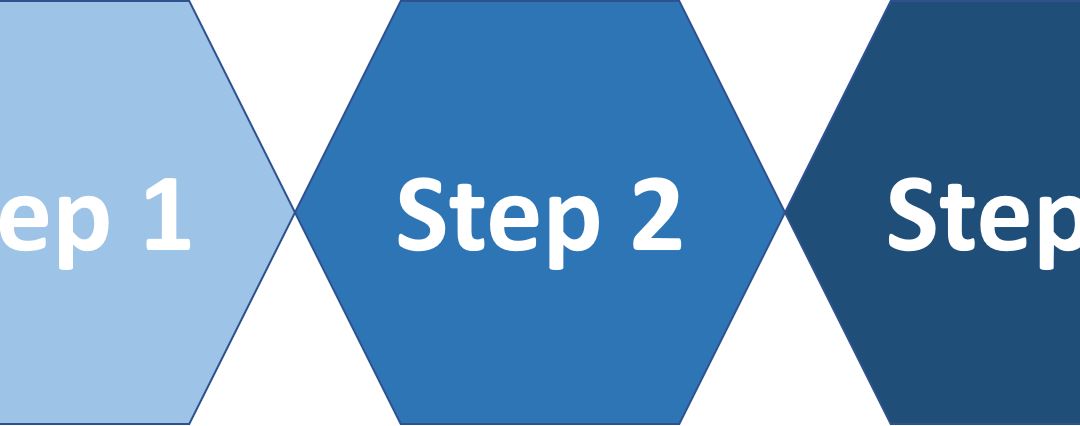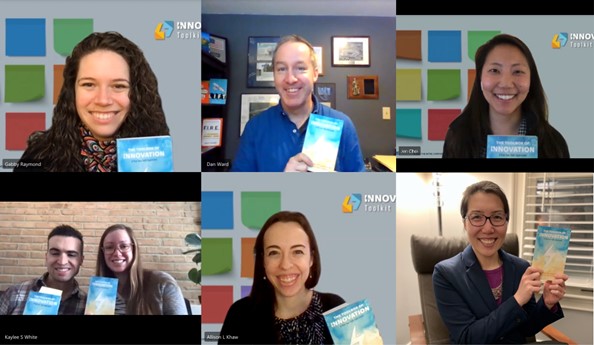by dbward | Aug 30, 2021 | Innovation Coaching
This week’s post is from Conor Mahoney, one of our new ITK Facilitator candidates
Every morning when I fire up my laptop, I often take a few minutes to peruse the latest postings on Arxiv, SSRN, and ArsTechnica, to ensure that I stay up with new technological developments and research findings. As a data scientist, a field that is both rather nebulously defined and constantly evolving, this is a task that often leads me chasing new “white rabbits” down their intellectual warrens like Alice from Alice in Wonderland. As I fixate on a new shiny object my thoughts immediately turn to my Sponsor’s programs, like someone working on a jigsaw puzzle with missing pieces, I see this new widget or tool filling in some gap in capability or function and greatly enhancing the end result.
However, successful innovation efforts rarely begin that way, with a technology in search of a use case. After 22 years inside the federal government and military ecosystem, I have yet to see this approach work. Instead, the majority of the successful innovation efforts I have participated in started by deconstructing an existing problem and identifying areas where technological injects or process refinements could alleviate user pain or deliver enhanced results. It can be difficult to resist the siren call of the shiny and new and focus instead on what really delivers value: enhanced capabilities tied to well documented user needs.
To that end I developed a phased approach that focuses teams on realizing and ameliorating problems, using several of the ITK tools. I call it the D4 approach to innovation, and it involves Discovery (identifying mission or capability problems) Deliberation (Identifying what pain points or capability gaps to address based on the perceived value gain), Deconstruction (unwrapping the problem to identify its threads, touchpoints, and relationships) and Development (ideating on solutions). I believe that one of its best value propositions for this approach is its ability to familiarize “outsiders” to a project and the problems looking to be addressed. Bringing in people from outside fields, mission areas, and organizations to look at problems with new perspectives and fresh approaches can often lead to excellent, outside of the box, ideas and it increases the diversity of thought that can be used to attack a problem set.
In terms of ITK tools this process can be thought of roughly as: Define, Understand, Generate, and Evaluate. In the Defining phase I might use Problem Framing to develop and document the problem statement at hand. With a group consensus on a problem statement, I can then Journey Map out the problem against a user or system perspective. As I move to Understand, I might break out the Triz Prism; which flows in sequence because it focuses on a well-defined problem (which I developed over the previous phases) and ends on a specific solution. Finally, during the Evaluate phase I like Rose, Bud, Thorn to identify potential issues with our specified solution or enhancement and to consider potential negative impacts to other processes or related capabilities.
There is, of course, no wrong answer when it comes to tool-chaining across the ITK tool palette. But putting tools end to end that build on one another is a useful approach that provides for continuity of thought and focus and it can help ensure that the innovation session never gets too far off the rails. Thinking about the tools as part of a larger, integrated, process and planning their use beforehand will often also provide “parking lots” for when team members rush towards a solution without defining a problem. I hope you enjoyed reading about my approach, and I hope you have fun innovating out your own.
by dbward | Aug 9, 2021 | Keeping up with the team, Misc Awesomeness
This week’s post is by Tracey Amos
In early May, MITRE’s Health Leadership Development team partnered with the Innovation Toolkit (ITK) team to deliver a weeklong Innovation Toolkit training series focused on hands-on use of several of the most popular Innovation Toolkit tools – Lotus Blossom, Mission and Vision Canvas, Problem Framing and Premortem.[1]
The series kicked-off with two 1-hour ITK overview sessions. The overview sessions drew over 200 participants and based on feedback, provided a valuable introduction and insights into how to use the Innovation Toolkit tools. In the words of one participant: “I had only heard about the ITK but didn’t really understand what it was. The session was a great introduction to the set of tools.”
The kick-off event was followed by five days of tool specific training. Two of the sessions were structured around use cases for current MITRE projects.
One session focused on the Premortem tool training: Project Leader Iris Sherman partnered with ITK facilitators Gabby Raymond and Jonathan Rotner to build a use case exploring possible impacts of not implementing a MITRE program recommendation in its final report. Using the Premortem tool, the training session framed and explored a worst-case scenario and used the input to define an updated goal and risk mitigation strategy. In the words of one participant: “Instead of waiting until the end of a project to find out what went wrong, and learn for the future, we can use this technique to go on an “imaginary time travel” to avert real failures.”
The other session focused on the Problem Framing Tool: Project Leader Audrey Winston partnered with ITK facilitators Tracey Amos and Tammy Freeman to build a use case to examine how Robotic Process Automation (RPA) and Artificial Intelligence (AI) might be applied to increase the ability of Medicare website visitors to complete routine tasks or search information without costly human intervention and to understand how other organizations serving similar populations (e.g., senior citizens, disabled, caregivers) use RPA and AI. The training session provided an opportunity for the MITRE project team to engage in a collaborative conversation with others, broadening their perspective around areas where automating processes using RPA and AI could potentially be a “game changer.” The team is confident that a compelling case can be made for further exploration in this opportunity space.
The Innovation Toolkit Training week ended with a “Meet the Authors” Roundtable event where members of Team Toolkit engaged attendees in discussion about the inspirational journey to curate the ITK suite of tools and to discuss their recently published book, The Toolbox of Innovation, a lively, playful gamebook written in a’ choose your own adventure’ style.
The Innovation Toolkit Training week was part of a suite of FY21 leadership development and training opportunities sponsored by Health FFRDC leadership as part of their commitment to “building trusted and innovative leaders.”
Throughout the course of the week, participants expressed interest in learning more about the ITK tools and how to apply them to engage their teams and their sponsors. In response, several Health FFRDC “pop-up” ITK events are being planned for later this summer! Stay tuned.
Has your project also used the ITK? Please comment and share your story!

by dbward | Jun 29, 2021 | Uncategorized
Tools like the Mission/Vision Canvas, the Problem Framing Canvas, and the Premortem tool all help teams develop a brief statement of some sort. It’s a pretty good feeling when the group comes up with a formulation or a phrase that they all agree on, and the statement itself can be a really helpful foundation and guide as the project or effort moves forward.
However, the work isn’t necessarily complete once the session ends and consensus has been reached. The group may have a pretty good version of a Vision Statement or a Problem Statement, but what they do next will determine how effective that statement is. I recommend a three-step process that looks something like this.
- Sleep on it. Set the statement aside and come back in a day or two with fresh eyes. You may discover it’s not as clear and clever as it seemed at the time. You may uncover a gap or a friction point, an opportunity to improve it… or you may confirm that it’s exactly what you hoped it would be.
- Socialize it. Share it with some colleagues who were not in the session and get their perspectives. Ask if it resonates with them – is it clear, accurate, actionable, etc? Testing it out and validating / refining the statement doesn’t have to take long or be super formal. In fact, it’s probably best if it’s quick and informal.
- Wordsmith it. Continue to play around with word choice and word order. Might the statement make more sense if you shuffled some parts around, swapped in a synonym, or made other changes? Sleeping on it and socializing it may unlock some new ideas you didn’t come up with in the original session.
As much as an ITK session aims to develop “clarity and consensus” on topics, keep in mind most of this work is actually iterative. We hardly ever follow the one-and-done path, and we like to remind people that there is a zero percent chance we got it one hundred percent correct on the first try. As a general rule, we get the most of out ITK sessions when we think about them as the beginning of a conversation rather than the end of one.
by ITK Administrator | Jan 12, 2021 | Misc Awesomeness, Tools 101
Today’s post is by Lynne Cuppernull, one of our new members of the ITK community, plus a brief interlude by Jim Jellison Last September, about 80 MITRE leaders in the Health FFRDC participated in a two-hour introduction to the Innovation Toolkit (ITK)—a...


